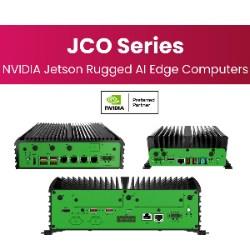Japan Embracing Industry 4.0 And IoT To Leap Into Next Industrial Automation
UK 'risks losing out in Industry 4.0 race'
Buildings Manufactured From A 3D Printer
Smart Factories Need Smart Machines
3D printing software, sensors, and carbon nanotubes among top Advanced Materials trends of 2016
Five Reasons Why Manufacturers Are Embracing IoT
Three Things to Do Before Operating Your New Automated Equipment
Boy, do Fanuc and Cisco have a deal for your factory
Is Velo3D Plotting a 3-D Printed Robot Revolution?
Volvo Construction Equipment Digs Up Prototype Savings Of 18 Weeks And 92% Of Costs
U.S. official sees more cyber attacks on industrial control systems
Thoughts turn to revolution in Davos
New Ultrasonic 3D Printing Process Can Create and Print High-Tech Composite Materials
Factory Automation Will Speed Forward with A.I., Says Bernstein
MesoGlue: Room Temperature Metallic Glue
Records 2626 to 2640 of 2809
First | Previous | Next | Last
Featured Product

